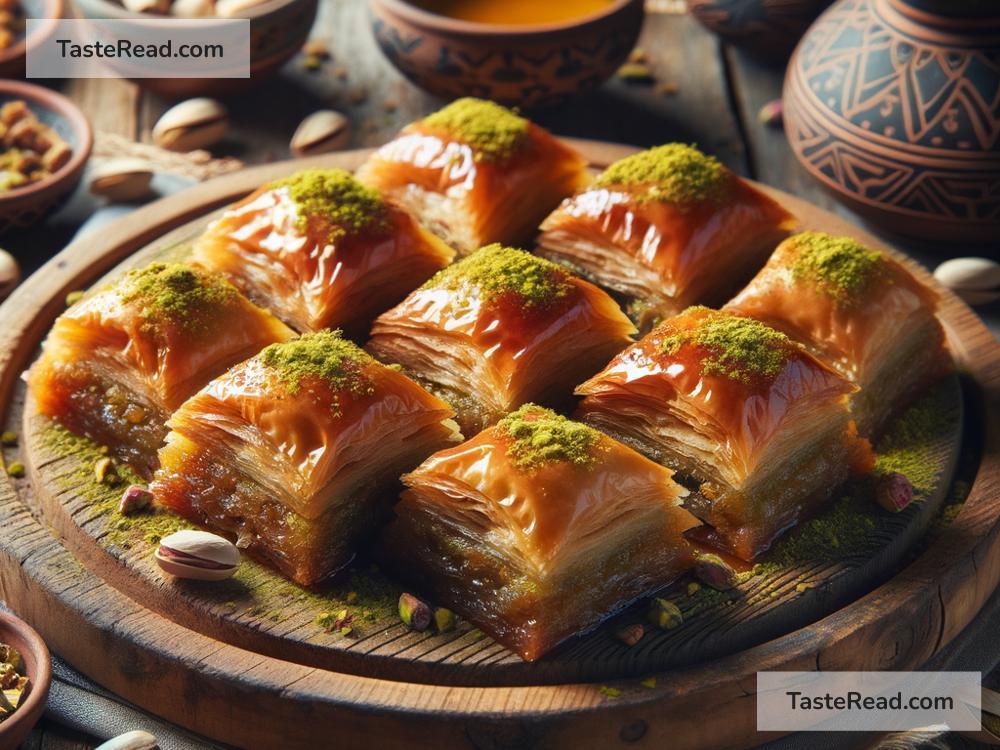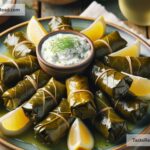The Influence of Greek Baklava
Baklava is one of the most loved desserts in the world, known for its rich flavor and flaky layers. This sweet treat has a long history and is deeply rooted in Greek culture, although its origins can be traced to many regions in the Eastern Mediterranean and Middle East. In this blog, we’ll explore how Greek baklava has influenced cuisine, culture, and people’s lives worldwide.
What is Baklava?
Baklava is a dessert made of thin layers of dough called phyllo, filled with chopped nuts such as walnuts, pistachios, or almonds. The layers are drenched in syrup or honey for sweetness. When baked, the dessert becomes crisp, golden, and irresistibly delicious.
Although baklava is not originally Greek, the Greek version has become famous for its unique use of honey and walnuts. In other variations across the Middle East or Turkey, pistachios are often used, and sometimes spices like cinnamon or cloves are added. What sets the Greek version apart is its simplicity, its focus on natural flavors, and the use of olive oil during preparation.
The History of Baklava
It is not easy to pinpoint where baklava comes from because it has been made in many cultures for centuries. Historians believe it began in ancient Mesopotamia, where early recipes for layered pastries appear in texts dating back thousands of years. From there, the concept of layered dough pastries spread to other parts of the world, including the Byzantine Empire, Turkey, and the Levant.
The Greeks played an important role in improving the baklava recipe. They introduced phyllo dough, which is famous for being as thin as paper and creates the flaky texture baklava is known for today. In fact, the word phyllo means “leaf” in Greek, which describes its delicate, flat layers.
Greek Baklava Around the World
Greek baklava has become one of the most popular types of baklava internationally. If you’ve ever traveled to Greece or dined at a Greek restaurant, you’ve likely seen baklava on the menu. Some people even consider it a symbol of Greek cuisine. It is often served during celebrations such as weddings, birthdays, and religious holidays like Christmas or Easter.
Greek baklava is loved all over the world because it uses simple, easy-to-find ingredients and has a balance of sweetness and nuttiness that appeals to many people. Its use of honey as a sweetener, instead of heavy sugar syrups, reflects how Greek cuisine often incorporates natural ingredients.
Why is Baklava Important in Greek Culture?
Desserts, including baklava, are more than just food in Greek culture. They carry meaning and tradition. For Greeks, food is a way to bring people together. Sharing baklava can be a way of expressing love or hospitality to guests. When people visit someone’s home in Greece, it is common for the host to offer sweets like baklava with coffee or tea.
Baklava is also connected to religious traditions. During Orthodox Christian holidays, baklava is often prepared without animal products, making it suitable for fasting periods. Some families even make baklava as an offering during celebrations, strengthening its ties to spirituality and communal values.
Baklava’s Global Impact
Today, baklava is not just a Greek dessert but a global dish. It can be found in bakeries, supermarkets, and restaurants all over the world. Each culture adds its own twist to the recipe, showing how baklava has influenced cuisines far beyond Greece.
Even in modern times, baklava continues to inspire chefs and home cooks. Foodies on social media share creative ways to make baklava, such as adding chocolate, fruits, or modern spices. While these new versions are delicious, traditional Greek baklava remains the favorite of many because of its authenticity and connection to history.
How to Make Greek Baklava
For those curious to try it at home, Greek baklava is surprisingly easy to make. All you need is phyllo dough, nuts (like walnuts and almonds), butter, honey, cinnamon, and a little sugar. Start by layering the phyllo dough with melted butter and adding your nut mixture between the layers. Bake until golden and crispy. Then, pour warm honey syrup over the baked baklava to soak into the layers. After a few hours of cooling, it’s ready to enjoy!
Making baklava can be a fun and rewarding process. It connects you to the rich history of this dessert and fills your home with the sweet aroma of honey and spices.
Final Thoughts
Greek baklava has influenced the world’s food culture in incredible ways. From its ancient roots to its modern popularity, this dessert reminds us how food can carry the stories of generations. Whether you’re enjoying Greek baklava at a festival, in a restaurant, or making it yourself, you’re taking part in a tradition that has traveled across centuries and borders.
The next time you bite into a slice of baklava, remember its journey and the people who have kept this beautiful dessert alive. With its delicate layers, nutty flavor, and touch of sweetness, Greek baklava truly represents the idea of food bringing people together.
So, if you haven’t tried baklava yet, now might be the perfect time to taste this amazing dessert—and perhaps even make it your own!


